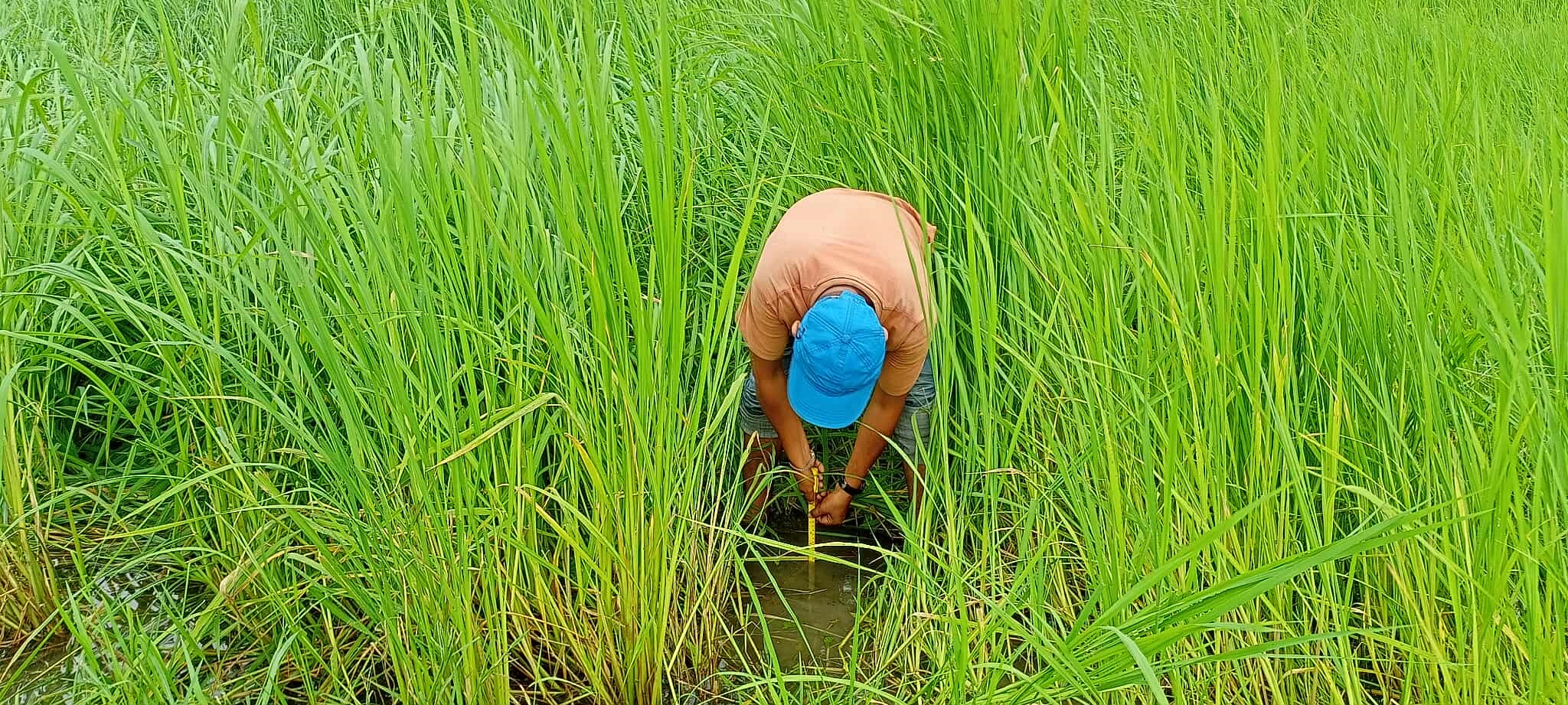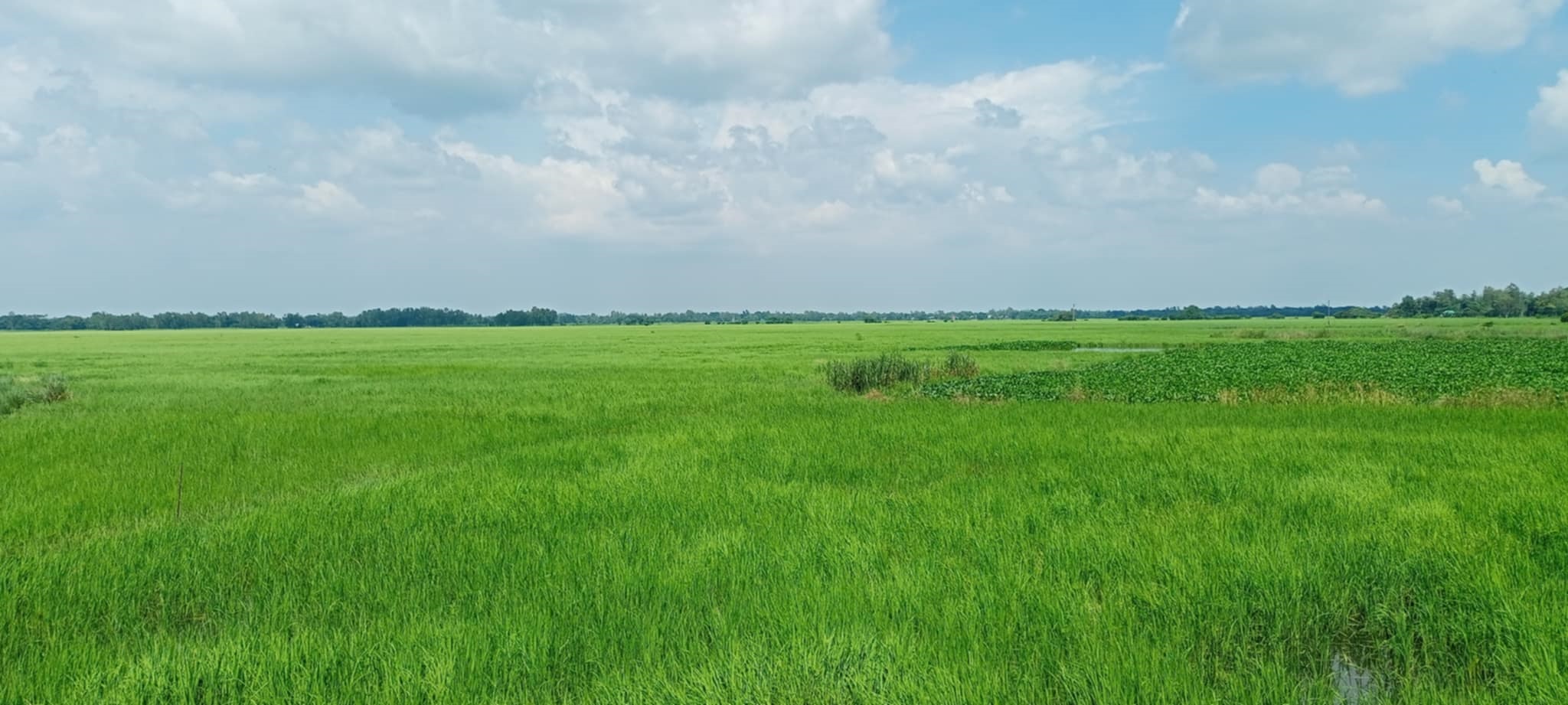By Subir Kumar Sarker, from Ghior, Manikganj
In the southeastern parts of Manikganj, farmers still nurture an ancient tradition that is, cultivating deep water Aman rice, locally known as buna dhan. Unlike other varieties, this rice has a unique quality which is the deeper the water, the taller the plants grow.
In the low-lying villages of Helachia, Kunduria, Bathuimuri, Nali, Ubhajni, Kolta, Manta, Joynagar, Baruna, Begmanagar, Khabashpur, and Balirtek, farmers sow deepwater Aman rice every year. Generations have depended on varieties like Jul Digha, Molla Digha, Amshail, Digha, Dudh Bhowailya, and Dhepo to adapt to monsoon rains and floods.

By sowing in the months of Baishakh and Joishtho, farmers prepare for the seasonal rhythm. When the floodwaters arrive in Asharh and Srabon, the rice shoots rise steadily with the swelling rivers, stretching as tall as 12 to 14 cubits. Alongside the rice, life flourishes in these watery fields where fish, snails, algae, dragonflies, spiders, birds, water lilies, and wild plants like kalmi and shencha coexist in harmony, each sustaining the other.
By Bhadra, the rice plants begin to form their ears, and come Ashwin and Kartik, the golden harvest fills granaries. This season is about food and celebration. Families welcome Nabanna, the festival of new rice, marked by homemade pitha and payesh, and children enjoy their first meals of freshly harvested grain. Entirely dependent on monsoon waters and fertile silt, deep water Aman remains a crop shaped by nature’s generosity.
Every part of the plant has a use. After threshing, rice straw is stored for winter fuel and as bedding for cattle. Farmers burn it to boil date-palm sap, use it for fencing onion plots, and even craft floating beds for vegetable farming. Rice husks feed livestock, while straw is also used in making clay idols for Hindu religious festivals.

Yet challenges loom. Subol Chandra Sarker of Kunduria and Poritosh Sarker of Begmanagar, both elderly farmers, reflect on the changes saying, “Farmers here still follow traditional methods that help us survive natural disasters with little cost.” They went on saying, “But in recent years, water has not arrived on time, and Aman yields have fallen. This has forced some farmers to turn to company-promoted Dhepo varieties. If the floods return in time, traditional Aman will surely regain its place in our fields.”
For now, the deep water Aman rice fields of Manikganj remain living ecosystems which protects biodiversity, sustains farming families, and keep alive a tradition where rice, water, and nature move together in rhythm.
